Posts for June 2013
Friday tip: how to tell if a site's down, or if it's your connection
 Ever get frustrated when a website you want to access seems to be down? Sometimes it can be tricky to tell if it's a problem with the website itself, or with your connection.
Ever get frustrated when a website you want to access seems to be down? Sometimes it can be tricky to tell if it's a problem with the website itself, or with your connection.
So, for this Friday's super-short tip, we reveal a really simple way to check if the problem's at your end or theirs.
All you need to do is visit the straightforwardly-named downforeveryoneorjustme.com.
Pop the address of the website into the box and it'll tell you whether the website is down for everyone or just for you.
Alternatively, if you use Google Chrome, take the time to read the 'page not found' message properly. The latest version tells you if other Chrome users are having trouble reaching the site too.
Visit downforeveryoneorjustme.com >>
Infographic: the £65,000 security breach
We seem to have covered IT security and data protection on this blog a lot recently. And there's good reason for that: suffering a data breach can cost your business a lot of time and a lot of money.
How much? Well, in the worst case it could cost smaller companies up to £65,000 to recover, according to this infographic based on research from the Department for Business, Innovation and Skills.
Interestingly, it's lost custom and business disruption that make up the majority of that loss. Businesses will tend to spend relatively little on actually responding to an incident, although if you have to bring in external suppliers or consultants to evaluate the damage and set things right then that can add up.
Here's the infographic, so you can see the cost of security breaches for yourself. Click it to view the full version:
Infographic by Via Resource. See full-size version.
Are small companies lagging behind in ecommerce?
The UK has embraced ecommerce more enthusiastically than every other EU country bar Sweden and Denmark.
Buying stuff online is incredibly popular, with more than 73% of people buying at least something online in 2012. The EU average was just below 50%, so where online shopping is concerned the UK really does blaze a trail.
Check out this graph from the EU's Digital Agenda. Each bar represents the percentage of individuals who bought online in 2012. The highlighted bar shows where the UK sits in the EU's top nations:
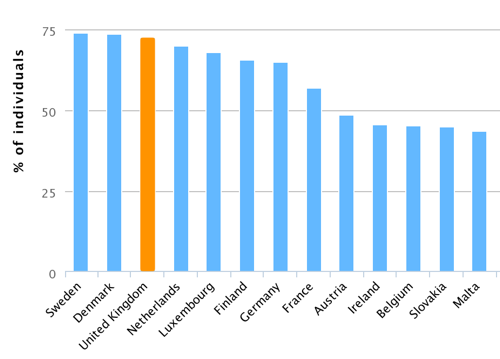
As you'd expect, this has resulted in a seriously big internet shopping market. E-retail expert IMRG reckons it's worth around £78bn.
Yet when you dig deeper into how that market is made up, it looks like smaller companies aren't claiming their fair share of the territory.
Enterprises surge ahead
According to EU figures for 2012, just 17% of UK small and medium-sized enterprises (SMEs) sell their goods or services online. Take in isolation, that sounds pretty low. But when you realise 42% of enterprises sell online, you can see the gap is actually pretty large.
As if to underline this discrepancy, the same research suggests that while online sales account for 25% of total enterprise turnover, for SMEs the figure is a paltry 8%.
Ecommerce is getting easier
|
It's not difficult to draw a conclusion here. It seems larger companies have managed to incorporate online selling into their business models more effectively than smaller competitors.
Setting up an online shop used to be really tricky. You had to build the whole thing from scratch, creating your online catalogue, shopping basket system and payment services from nothing.
That required real expertise - and the kind of money only bigger companies have.
But things are very different a few years on. You don't need much technical knowledge at all to sell online.
Reclaiming lost ground?
You can use an off-the-shelf ecommerce system to provide the framework for your shop. All you have to do is to populate it with your products and work out how to deliver them.
So, as it's so easy to start selling online, can we expect a surge in smaller companies doing so? Perhaps they're about to reclaim some of that lost ground.
Or, more depressingly, is the best model for online commerce to pile 'em high and sell 'em cheap? If so, smaller companies must find their niche to sell online effectively. Because it's almost impossible to take on giants like Amazon and beat them at their own game.
How does selling online work for your business?
A new free tool to create your invoices
If you're a small company or freelancer looking for a really easy way to get invoices out to clients fast, you could do a lot worse than look to online accounting provider FreeAgent.
Although you have to pay for FreeAgent's main accounting software, the company now offers Invoice-o-Matic, a free online tool that creates decent-looking invoices for you.
Invoice-o-Matic is clearly designed as a hook to get you to start using the company's full-on accounting software. However, it's still very useful in its own right and certainly worth investigating if you currently do your invoices with Microsoft Word.
FreeAgent has posted this video showing Invoice-o-Matic in action:
Try Invoice-o-Matic for yourself >>
Business tech bargain: Microsoft Office single copy
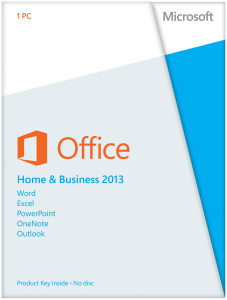 If you run a business, you probably use Microsoft Office. And if you need to buy a single copy, it ain't cheap. Figure on paying £219 direct from Microsoft.
If you run a business, you probably use Microsoft Office. And if you need to buy a single copy, it ain't cheap. Figure on paying £219 direct from Microsoft.
(Versions designed for home use are much cheaper, but the catch is that the software's licence agreement says it can't be used for business purposes.)
It is possible to save a bit on this by shopping around. At the moment, you can pick up the exact same package - Microsoft Office Home and Business 2013 - for £178.99. That's a saving of £40 on the Microsoft price.
See details and buy from Amazon >>
For that you get full copies of Microsoft Word, Excel, PowerPoint, Outlook and OneNote, which are all the major office packages you're likely to need in your day-to-day work.
If you're planning to buy, just be aware that all Amazon will send you is a card containing a licence key for the software. There's no disc included, so you have to download the software online, then activate it with your licence key.
It's probably one of the more expensive pieces of paper you'll ever buy, but if you need Microsoft Office then it's money well spent.
|
Sponsored links: |
Friday tip: how to open Visio files without Visio
 Every once in a while someone will send you an attachment you can't open on your computer, usually because you don't have the right software.
Every once in a while someone will send you an attachment you can't open on your computer, usually because you don't have the right software.
This often happens with Microsoft Visio files. Used to create diagrams and flowcharts, Visio is a complex piece of software that most people have no need for on a day-to-day basis.
At £279 for the Standard version of Visio, it's too expensive if you only need to open Visio files occasionally. But if you don't have a copy, what do you do when someone sends you a file in Visio format?
Here are two options:
1. Use the Visio viewer
This is the straightforward method, if all you don't need to make any changes to the Visio file.
Just download Microsoft's free Visio Viewer software, and run it to install the viewer on your computer.
This free software will let you open and view Visio files without Visio. However, you won't be able to make any changes.
2. Use other software to edit Visio files
It's traditionally been tricky for software developers to decode Visio files, which is why it's hard to open Visio files without Visio.
However, in recent years a couple of packages have added Visio support. They don't always work 100% (especially if your files contain complicated diagrams) but they're worth a go:
- LibreOffice is a free alternative to Microsoft Office. It includes a package called Draw, which can open and save Visio files.
- LucidChart claims to be 'only online diagramming application that offers Microsoft Visio import and export.' You can try it free.
Failing that, ask the person who sent you the file to use their copy of Visio to save it in a different format. Visio can export to PDF files, which are ideal if you just need to review a diagram.
Bling-bling ... here's one iPhone you won't be buying for your staff

Although more and more companies are providing staff with iPads, iPhones and other mobile technology, gold plating company Goldgenie has announced a customised iPhone that'll smash even the most generous of equipment budgets.
The completely ridiculous Superstar Ice iPhone 5 is customised with 200 grams of solid 18-carat gold, making it look less like a phone and more like a prop from Bond film Goldfinger. (That's about where the parallels with James Bond end, mind you. We can't really see Daniel Craig using this abomination to place a call to Q.)
Oh, and the price? At £68,000, it's just a smidgen over the usual £699 retail price for a top-end iPhone 5. That does include a luxury cherry oak box, plus a certficate of authenticity, mind you.
There are a number of downsides to owning this fine customised gadget, of course. In addition to looking like a numpty every time you make a call, you'll find your iPhone 5 is noticeably heavier and more attractive to thieves.
No news on what all that gold does to signal strength, but encasing an antenna in metal is generally a good way to significantly reduce its effectiveness.
If gold isn't your thing, you can also get Goldgenie to cover an iPhone 5 with diamonds instead - or any other precious stone you require. Alternatively, this £3.99 cover from Amazon will accomplish much the same thing.
|
Sponsored links: |
Why PRISM means your hosting location matters

Millions of businesses rely on cloud technology each day, and recent revelations about PRISM have thrown data security back into the spotlight, demonstrating that where your data is physically located can really matter.
Where's the cloud?
Over the last five years or so more and more companies have started moving business data to the cloud. But while the benefits of the technology are clear, the implications are often not.
In truth, cloud technology can present some real challenges. Not enough companies are giving thought to the legal and physical implications of the cloud. I believe cloud providers have a responsibility to highlight these factors, of which location is one.
Location, location, location
|
It's widely accepted that companies should hold data in a secure facility (usually a building called a data centre, constructed specifically for the purpose). The location of that facility often get overlooked, but it matters.
For starters, some regions are prone to natural events such as earthquakes or floods. Others are beset by political instability and unrest.
The Euro crisis has hit confidence in some European countries which were previously considered rock-solid.
And then there's growing interference by governments - yes, we're back to PRISM again.
In light of these concerns, you're well-advised to investigate the setting of any potential cloud provider's facilities.
Where is right for you?
When evaluating the location of a cloud provider or hosting firm, these are the main factors to consider:
- Environmental risk. For instance, is the area prone to earthquakes or flooding?
- Political stability. Can you be confident the business environment won't change?
- An efficient legal system. If something goes wrong, you want a framework that makes it easy to seek redress.
- Low crime and corruption. You can be more confident about your data safety.
- Respect for confidentiality. After all, your business data is likely to be sensitive.
Staying competitive
Not only do you need to keep your data secure, but you also need to maintain a competitive edge.
Cloud services give you extra flexibility and make it easy for you to work on the move, but location plays a part in competitiveness too.
For instance, server response times can vary significantly depending on whether your servers are located relatively nearby (the same country or continent), or further afield (like the other side of the world).
This can have a very real influence on your website's search rankings, because load speed is one of the factors Google takes into account.
These are just some of the reasons your business should pay attention to the location of servers holding your data. Have you give it much thought?
Mateo Meier is founder of Artmotion, which offers hosting services located in Switzerland.
Friday tip: fix your website's broken Twitter feed
 Do you publish a live feed of tweets on your business website? And has it recently stopped working? For our tip this week, we can explain why.
Do you publish a live feed of tweets on your business website? And has it recently stopped working? For our tip this week, we can explain why.
It's all to do with changes Twitter is making to its API.
API-what?
Let's step back for a moment. API stands for application programming interface. It's a set of functions in Twitter that allows people to create applications using Twitter data.
For instance, if you use a program like Echofon or HootSuite to manage your Twitter account, that software accesses Twitter through the API. You can think of it as an official connection through which third party apps can plug in to Twitter.
So, why has our feed stopped working then?
|
Back last year, Twitter announced it was moving to a new version of its API.
On 11 June this year, the changeover was complete, and the old API was shut down. This means any apps or tools that use the API stopped working.
We won't go into detail about all the API changes (here's more information, if you're interested), but one big difference is that it's now harder for apps to access a list of your recent tweets.
You now have to authenticate each app in your Twitter account, giving it permission to access your feed. Previously, this wasn't required.
How to fix your broken feed
If your website's Twitter feed has broken, it's probably to do with this authentication issue. There are a couple of ways to fix it, depending on how your website is built:
- If your site was built for you by a developer, it's probably best to have a word with them about the changes. They should be able to update your site to work with the new API, or make other changes as required.
- If you use a content management system for your site, it's likely you're using a plug-in or add-on to access your tweets. Updating this to the latest version may fix the problem.
You might also have to tweak how tweets are displayed on your site, as Twitter now requires tweets to be displayed in a consistent way.
Business tech bargain: Big Dell laptop, small price
 Because they're too big to slip into a typical bag and carry around, 17" laptops aren't for everyone.
Because they're too big to slip into a typical bag and carry around, 17" laptops aren't for everyone.
However, if you're keen to have a big screen and a keyboard with a numeric pad, and you want a machine you can move round the office and take out occasionally, a 17" model might be for you.
If you want to see how a laptop with a larger screen suits you, Dell's Inspiron 17 is currently available from just £335 including VAT and delivery.
See details and buy from Dell >>
That's a great price for a PC which has received decent reviews, and while the entry-level model isn't exactly over-powered, it still has enough oomph to run standard business software like Microsoft Office.
The Inspiron's real stand-out feature is its screen, which is crisp, clear and manages a resolution of 1,600 x 900 pixels. Most laptops in this price bracket make do with lower-resolution 1,366 x 768 screens.
In all, this is an excellent tech bargain if you're looking for a big laptop at a small price.
|
Sponsored links: |
On video: three IT mistakes your should avoid (and one cat)
We all have our embarrassing moments when it comes to using computers at work. A few weeks ago I knocked an entire glass over water over my year-old laptop. (Thankfully it seems to have survived ok, and may even have emerged cleaner as a result.)
When IT problems happen, mostly you have to do your best to fix them, shrug your shoulders and move on. But just occasionally, problems are captured on video for the wider world to see. And that means you can learn from the mistakes of others, instead of making the errors yourself.
We trawled YouTube to find three salient lessons about using computers and IT for business:
1. Be careful with deliveries
If you need an unfeasibly large amount of cable for your office, be careful as you unload it:
(This video was part of a marketing campaign for Microsoft, but it may still make you chuckle.)
2. Don't mess with your computer's cooling
Everyone knows that computers get warm as you use them. But it's amazing how hot they get if you remove the heatsink that cools the main processor.
As this old video shows, they literally go up in smoke:
3. Cats and printers don't mix
Ok, most companies probably don't have an office cat. But if you do, don't make the mistake of letting them near your printer:
Five myths about hackers (and why they matter to your business)

Most hackers look absolutely nothing like this
Security breaches and hacking attempts seem to be in the news all the time. And the stories tend to focus on the organisations that have been hacked, rather than dwelling on who's doing the hacking.
Perhaps as a result, there are lots of myths and misconceptions about hackers. Read on and we'll explode five of the most common.
Myth one: hackers don't target small businesses
IT dealsSee the latest business tech bargains we've found online. Or buy IT equipment now from these trusted suppliers: |
Just because the newspapers only report when big companies get hacked doesn't mean that smaller firms are safe.
In fact, there's evidence to suggest hackers are increasingly targeting small firms, which may hold valuable data - like customer details or intellectual property - but don't have big resources to invest in security precautions.
For instance, one poor newsstand owner ended up around £14,000 out of pocket after his cash registers were hacked to send customers' credit card details to Russia.
Myth two: hackers are kids
Are some hackers kids just out to cause mischief and gain kudos online? Sure.
But don't make the mistake of thinking that the stereotype holds true for everyone who might try and break into your computer systems.
These days, hacking is big business. There's a big black market for stolen information like credit card details. Hackers are coordinated, organised and professional about what they do, because they can make money doing it.
Myth three: hackers use cutting edge techniques
Hackers don't steal information by sitting at their desk working out how to break through your firewalls, work out your encryption and read your data. Well, most of them don't.
These days they're more likely to put their efforts into creating a convincing phishing website to steal your log in details.
Why? Because it's easier and it works.
Myth four: hackers only target Microsoft Windows
Don't assume that because you use an Apple Mac, you're safe from hacking attempts.
While it's true that Microsoft Windows attracts most attention from hackers, that doesn't mean they aren't also finding ways to break into other platforms and devices.
In fact, with data spread across smart phones, tablets, laptops, desktops, CDs, portable hard drives and in the cloud, you could argue there are more targets than ever for hackers.
Myth five: you can only stop hackers with security software
Yes, you can block hacking attempts with a strong firewall, and fend off many threats with good security software from a company like McAfee or Symnatec.
But don't let good security software lull you into a false sense of security.
Hackers have long realised it's people who are the weakest links in any line of defence. We're all susceptible to social engineering, which is why hackers use flattery, confidence tricks and outright lies to trick you into revealing sensitive information or granting access to key systems.
There are some good examples of social engineering here.
Friday tip: three ways to make your computer faster

For this Friday's IT tip, we look at how to make your computer faster without breaking the bank. So whether you just want things to run a bit more smoothly, or need to keep your old computer going for another for months, here are three simple things you can do:
1. Clean up your hard drive
Over time, your computer's hard drive will become strewn with all manner of unnecessary files and data.
Your software is constantly reading and writing data, and over time this can clog your disk and slow your computer.
All major operating systems - including Windows and Mac OS - come with tools to clean up your hard drive and make your computer faster. Running them once in a while will prevent errors building up and improve performance.
See instructions for:
2. Upgrade your RAM
We've covered this one before, but it bears repeating: in many situations, upgrading your computer's RAM (random access memory - the space software stores data while you're using it) is the best way to both make your computer faster and extend its life.
There's a good tool to find RAM for your computer on the Crucial website, or you can try this one from Data Memory Systems. You can also read our advice about upgrading your RAM.
3. Remove programs you don't need
Many computers come stuffed with a mass of pre-installed programs that you'll never use and don't need. They take up space and often open automatically when you turn your computer on, which slows everything else down.
On the other hand, if you've had your computer a while then the chances are good you've installed software that you no longer use. If it's running in the background, it could be causing a slowdown too.
The fix? Review the software on your computer and remove anything you don't use. That'll make your computer faster - here's how to do it in Windows.
Business tech bargain: external Blu-ray writer under £60
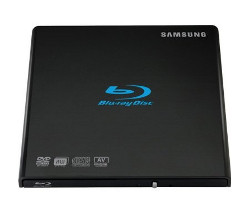 Even in these days of cloud storage and giant hard drives, removable discs have their uses. And if you need to cram a lot of data onto a single disc, you'll be wanting a recordable Blu-ray drive, like this tech bargain from Samsung.
Even in these days of cloud storage and giant hard drives, removable discs have their uses. And if you need to cram a lot of data onto a single disc, you'll be wanting a recordable Blu-ray drive, like this tech bargain from Samsung.
It's an external Blu-ray recorder, which means you can just plug it into your computer via USB and start burning discs. There's no need to even connect a separate power cable, as this Blu-ray writer is powered from your computer's USB port.
It's made by reputable manufacturer Samsung and is currently available for £59.99 from both Amazon and Dabs.
See details and buy now from: Amazon | Dabs
Blu-ray discs are most often used to store high-definition video, and over the last few years they've begun to replace DVDs. However, just like DVDs, Blu-ray discs can also be used to store data. And because they offer a much higher capacity than DVDs and CDs, they're a good option for backing up and storing data.
Of course, Blu-ray discs created with this drive can only be read by other Blu-ray players. But you can also use it to burn data to standard DVDs and CDs.
Four signs it's time for a new IT support company

Assuming you don't have the resources to provide support for your business IT in house, your choice of IT support company can be instrumental to your success.
IT dealsSee the latest business tech bargains we've found online. Or buy IT equipment now from these trusted suppliers: |
Good support makes the difference between technology that's good enough, and technology that gives you a competitive advantage. And when something goes wrong, you'll be glad to have a support partner you can rely on.
While you should always look to build a lasting relationship with your IT support firm, there may come a time when you need to consider switching.
So, here are four signs it's time to find a new IT support company:
1. You only talk when something's wrong
A good IT support firm will perform preventative maintenance to reduce the chance of things breaking in the first place. And you should feel able to turn to them for advice whenever you need it.
In short, they should be more than The AA for your business computers. And if they're not, you can almost certainly get better value elsewhere.
2. Invoices arrive bang on time, but they never return your calls
This is a pretty clear sign that you've moved from being the client they need to impress to being the client they can count on to keep paying the bills.
Maybe your support firm is overworked and it's a temporary blip while they expand. Or perhaps they're focusing on new business to the detriment of your service. Either way, it's time to have a chat with them
3. They only just meet their SLA
Your SLA, or service level agreement, is part of your contract that stipulates how long you'll have to wait for a response or to get things fixed.
A good support company will aim to exceed this level of service, so if they're only just sneaking inside the time limits when you need help, it might be a sign that things are taking a turn for the worse.
4. They seem to be stuck in the mud
Business IT is changing fast. If your support company refuses to support new tech like smart phones, tablets or cloud services, you need to find a supplier that will.
Quite simply, these things aren't going away and can bring big benefits to your business. Find ways to embrace them, rather than listening to a supplier that says 'it's too difficult'.
Have you ever had a difficult conversation with your IT support company? How did you handle it?
The start button makes a comeback
Have you tried Windows 8 yet? With its new interface designed for touch screen computers, it's caused some confusion among people who are used to the traditional Microsoft Windows dektop and start button.
IT dealsSee the latest business tech bargains we've found online. Or buy IT equipment now from these trusted suppliers: |
The former is still there, albeit hidden behind a new whizzy start screen. But the ever-present start button, which has illuminated the way to key software since 1995? It's gone for good.
Or at least, so we thought. But as it turns out, Microsoft has performed a u-turn of sorts by announcing that a forthcoming update to Windows 8 will reinstate a start button.
It's not the same as the old faithful start menu, of course.
Instead of popping up a full menu listing applications, documents and useful destinations on your computer (like the Control Panel), the reinstated Windows 8 start button will simply send you back to that start screen, which looks a bit like this:
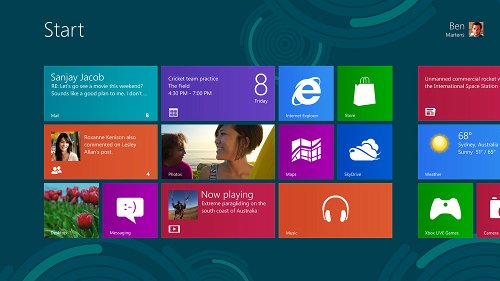
It feels like a fudge. Microsoft has suffered significant criticism for removing the start button, and reinstating it looks like an easy way for the tech giant to say 'we've listened and taken action', without really changing how Windows 8 works.
In some ways, the company is to be admired. The new start screen might well be the way forward, especially as touch screen laptops become more common.
But for now, if you're using Windows 8 and pining for the old-fashioned start button's functions, your best bet is to use third-party software to recreate it for yourself.
The new start button will be part of a free update to be released later this year.
Business tech bargain: a massive 3TB hard drive for less
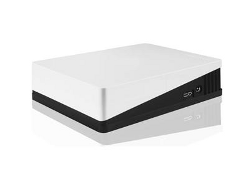 Data, data, data. Your business is almost certainly creating more of it than ever. So, where can you keep it all?
Data, data, data. Your business is almost certainly creating more of it than ever. So, where can you keep it all?
How about this Toshiba external hard drive? The StoreE Canvio hard drive might be a strange, badly-capitalised name, but with 3TB (terabytes) of storage space it has room for an enormous amount of data.
And although the amount of storage is high, the price of this tech bargain is low. You can currently pick it up from Dabs for just £83.98, which is one of the cheapest 3TB drives we've ever seen.
About this tech bargain
It's sometimes hard to understand what a volume of storage like '3TB' means in practice. So, in real-world terms this Toshiba external hard drive is certainly big enough to back up all the information on your own computer, with plenty of data to spare.
In fact, 3TB is enough to store:
- Enough music to play continously for over four years without repeating a track
- Around 600 full-length DVD movies
- Over 20 million typical business Word documents (like simple letters or reports)
The point is that 3TB is enough to back up an awful lot of your valuable business data.
There are two other important points to note about this bargain hard drive:
- It has a USB 3.0 connection, which means if your computer has USB 3.0 capabilities then it'll transfer data nice and quickly.
- It comes with a separate power adaptor that you have to plug in, so it's not ideal for portable use.
In terms of high-capacity storage offering value for money, it's probably the best you'll find.




